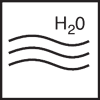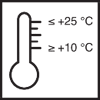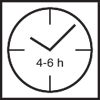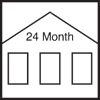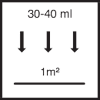Article No. 187901
Lacquer component containing special additives that allows house doors initially lacquered in the factory to be freshened up on site after installation
Product specifications
The stated values represent typical product characteristics and are not to be construed as binding product specifications.
Field of application
- For creating a coating that allows house doors initially lacquered in the factory to be freshened up on site: Induline DW-625, Induline LW-725 and Induline NW-740/05
- The pre-filled 750 ml container is topped up with lacquer in the desired grade
Properties
- Easy to apply
- Low odour
- Good flow properties
- Block resistant (in accordance with Code of Practice HO.03)
- Weatherproof and moisture-regulating
- Resistant and long-lasting thanks to a special polyurethane binding agent
- Added bonus of being resistant to scratches and hand cream when surface is subjected to normal use
- Resistant to yellowing
- Highly elastic
-
Preparation
-
Substrate requirements
Dimensionally stable wood building elements: wood moisture content 11-15%
Building elements given a final coating of Induline DW-625/ LW-725/ NW-740/05
-
Preparations
Remove dirt and grease using V 101 Thinner.
Carry out intermediate sanding before applying a final coat: P 220-240, remove sanding dust.
Observe BFS Code of Practice No. 18 "Coatings on Wood and Wooden Working Materials in Outdoor Areas".
-
-
Application
-
Application requirements
Temperature of the object, air and material: from 10 °C to 25 °C
Do not apply in direct sunlight
Do not apply in dew, fog or rain
Protect freshly lacquered surfaces against dust, dirt, etc. -
Stir well.
Apply using a brush or roller.
Seal opened containers well and use contents as soon as possible.
-
Application instructions
-
Check colour, adhesion and compatibility with the substrate by setting up a trial area.
Areas that are being coated or dried should be protected against rain, wind, sunlight and condensation.
Protect freshly coated surfaces from dirt, dust etc.
Use suitable adhesive tape (e.g. tesa® Maler-Krepp Precision Outdoor 56251) to mask all surfaces that are not to be coated.
Touch up all window glazing bars and rabbets and then all remaining surfaces.
Proceed as follows:
Take a short-pile roller (one tried-and-tested option is Storch article no. 148918) and apply the lacquer evenly in rows. Immediately afterwards, use a fine foam roller (one tried-and-tested option is Storch article no. 156812) to create the effect of a spray-coated surface.Make sure that there is no streaking.
Plan your work in such a way that the entire application process can be completed within five minutes.
Any adhesive tape used must be carefully removed from the substrate after around 30 minutes.
If the lacquered house door needs to be closed before the coating has hardened completely, we recommend inserting wax paper between the frame and the door.
-
Drying
Dust dry: after approx. 1 hour
Fit for use with caution: after approx. 4-6 hours
Completely set after approx. 48 hoursPractice values at +20 °C and 65% relative humidity.
The coating may take significantly longer to dry thoroughly in lower temperatures, at high humidity or if the maximum layer thickness has been exceeded.
-
Thinning
Ready to use following preparation of the mixture.
Must not be diluted further with water.
-
Working tools / cleaning
-
Short-pile roller (one tried-and-tested option is Storch article no. 148918), fine foam roller (one tried-and-tested option is Storch article no. 156812), acrylic paintbrush.
-
Clean tools immediately after use with water and detergent.
Ensure that any residue from cleaning is disposed of correctly.
-
Storage / shelf life
-
If stored unopened in its original container in a cool, dry place and protected against frost, the product will keep for at least 24 months.
-
Usage
-
30-40 ml/m² per coat
-
General information
-
Do not use any alcoholic cleaning agents.
For cleaning and care, we recommend the care set for doors (2746).
-
-
Disposal instructions
-
Larger quantities of leftover product should be disposed of in the original containers in accordance with the applicable regulations. Completely empty, clean containers should be recycled. Do not dispose of together with household waste. Do not allow to enter the sewage system. Do not empty into drains.
-
-
Safety / regulations
-
For further information on the safety aspects of transporting, storing and handling the product and on disposal and environmental matters, please see the current Safety Data Sheet.
-




